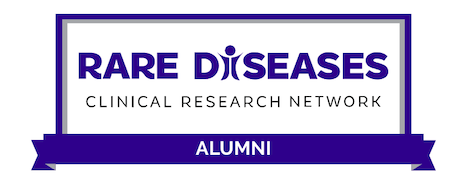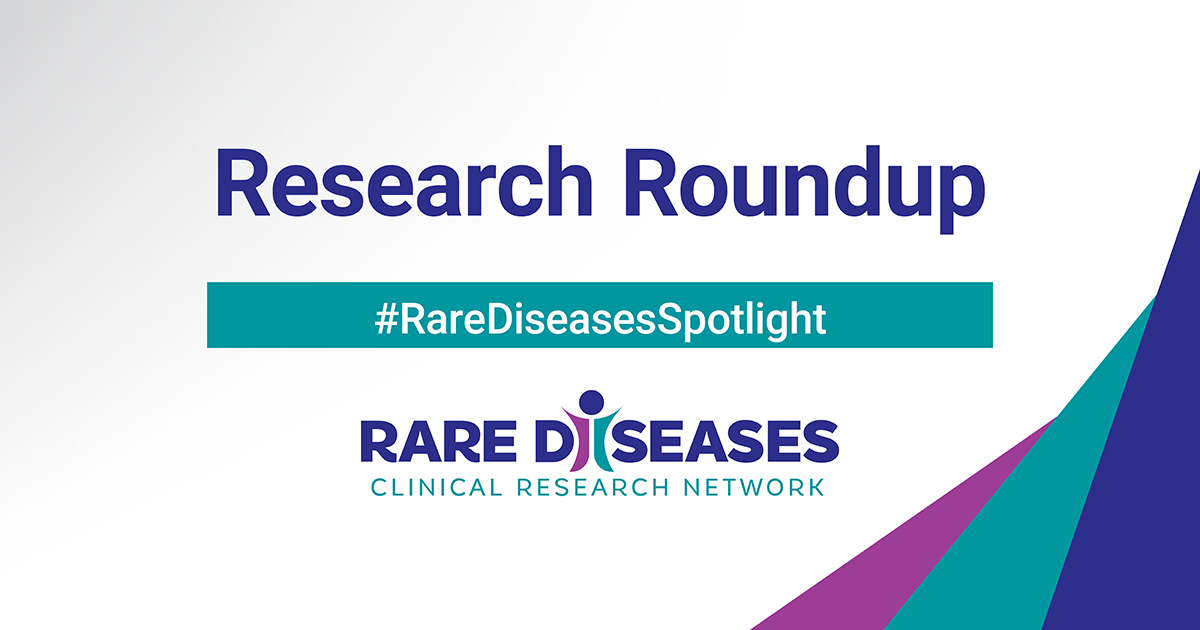Each month, we share summaries of recent Rare Diseases Clinical Research Network (RDCRN) grant-funded publications. Catch up on the latest RDCRN research below.
Jump to:
- Developmental Synaptopathies Consortium (DSC)
- Frontiers in Congenital Disorders of Glycosylation (FCDGC)
- Nephrotic Syndrome Study Network (NEPTUNE)
- Urea Cycle Disorders Consortium (UCDC)
Developmental Synaptopathies Consortium (DSC)
Study Reveals Broader Autism Phenotype for Young Children with Tuberous Sclerosis Complex
Tuberous Sclerosis Complex (TSC) is a rare genetic disorder that causes noncancerous tumors to develop in many parts of the body. It is highly associated with autism spectrum disorder (ASD). Researchers seeking to characterize autistic features in young children with TSC evaluated 138 children from ages 3 to 36 months. They used both development and autism-specific assessments. One in four children in the study had been diagnosed with ASD by 36 months. Many individuals with TSC without an autism diagnosis also exhibited a range of autistic behaviors that were below the diagnostic threshold. Study authors report a broader autism phenotype (set of characteristics) that can be identified in young children with TSC, offering an opportunity for early, targeted treatments.
New Research Evaluates Social Attention and Recognition Memory in Phelan-McDermid Syndrome
Phelan-McDermid Syndrome (PMS) is a rare genetic disorder characterized by intellectual disability and motor delays. It is also one of the most common genetic causes of autism spectrum disorder (ASD). Social deficits are a core feature of ASD. In order to characterize social attention and recognition memory, researchers tested a group of patients with PMS and another group of patients with idiopathic (no cause identified) ASD on a visual paired-comparison task. They analyzed the behavior of test subjects looking at a novel image versus a previously viewed, familiar image.
Researchers found differences in attention and memory for social stimuli in the PMS group v. the idiopathic ASD group. Study authors say that these unique patterns could both clarify underlying mechanistic alterations and inform treatment targets for PMS. They could also help stratify individuals with idiopathic ASD and potentially apply knowledge gained in PMS to those individuals.
Frontiers in Congenital Disorders of Glycosylation (FCDGC)
Researchers Examine Genotype-Phenotype Correlations in PMM2-CDG
PMM2-CDG is a rare disease that causes hypoglycosylation of multiple proteins. Direct genotype-phenotype correlations are not yet identified.
In this paper, researchers carried out a retrospective cohort study on 26 PMM2-CDG patients. They collected the identified genotype, as well as variables indicating the disease severity and patients' phenotype. By studying the phenotypic effects of patients' genotype, researchers gained a better insight in the phenotypic prognosis of PMM2-CDG, according to their molecular base.
They concluded that specific pathogenic variants (p.Pro113Leu and p.Phe119Leu) have a significantly higher total NPCRS disease severity score which indicates a more severe clinical outcome. The Nijmegen Paediatric CDG Rating Scale (NPCRS) is a tool to objectively follow the clinical disease progression in clinical disorders of glycosylation (CDG). Pathogenic variants affecting the folding or stabilization domain of the PMM2 enzyme protein have a significantly lower total NPCRS and thus the genetic results could provide a good prognostic clinical outcome.
Nephrotic Syndrome Study Network (NEPTUNE)
Improving Classification Systems for FSGS and Minimal Change Disease
Classification systems for focal segmental glomerulosclerosis (FSGS) and minimal change disease (MCD) need improvement. In research published in the American Journal of Kidney Diseases involving 221 patients with MCD and FSGS in the Nephrotic Syndrome Study Network (NEPTUNE), investigators applied the NEPTUNE Digital Pathology Scoring System to generate scores for 37 glomerular descriptors. Three clusters were identified. Clusters Y and Z had higher probabilities of proteinuria remission, lower risks of disease progression, and lower kidney function loss over time compared with X. Cluster X had 1,920 differentially expressed genes compared with Y+Z, which reflected activation of pathways of immune response and inflammation. Six descriptors correlated with clinical outcomes and gene expression.
Urea Cycle Disorders Consortium (UCDC)
Review Paper Examines Study Design and Causal Inference Methods in Rare Diseases
Sound study design and causal inference methods are essential to demonstrate the therapeutic efficacy, safety, and effectiveness of new therapies. In the rare diseases setting, the small patient population size, genotypic and phenotypic diversity, and the complexity and incomplete understanding of the disorder's progression challenge the use of typical parallel control designs.
This paper reviews longitudinal designs and draws the parallel between some new and existing randomized studies in rare diseases and their less well-known controlled observational study designs. Authors provide examples of analyses in multiple rare disorders, including urea cycle disorder and cystic fibrosis.
The Rare Diseases Clinical Research Network (RDCRN) is funded by the National Institutes of Health (NIH) and led by the National Center for Advancing Translational Sciences (NCATS) through its Division of Rare Diseases Research Innovation (DRDRI). Now in its fourth five-year funding cycle, RDCRN is a partnership with funding and programmatic support provided by Institutes, Centers, and Offices across NIH, including the National Institute of Neurological Disorders and Stroke, the National Institute of Allergy and Infectious Diseases, the National Institute of Diabetes and Digestive and Kidney Diseases, the Eunice Kennedy Shriver National Institute of Child Health and Human Development, the National Institute of Arthritis and Musculoskeletal and Skin Diseases, the National Heart, Lung, and Blood Institute, the National Institute of Dental and Craniofacial Research, the National Institute of Mental Health, and the Office of Dietary Supplements.


